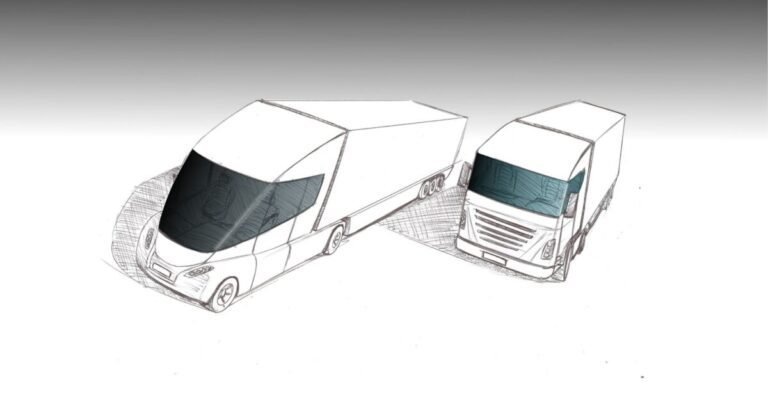Images courtesy of PEM Motion GmbH
Are you interested in this kind of news?
Receive them directly in your inbox. It is delivered once a week.
Truck manufacturers will be able to lengthen the cab design by 80 to 90 cm, but only if they use the space to provide better visibility from the driver’s seat, improve aerodynamics, add new safety features and enhance driver comfort. As a result, new truck cab designs in Europe are expected to include larger windshields to see cyclists and pedestrians, and to have more streamlined bodies to reduce fuel use and pollution. The curved cab should also better deflect pedestrians and cyclists in collisions – so they don’t fall under the truck’s wheels.
James Nix, T&E’s freight director, said: “This reform is a win-win for the industry and the public. The truck of the future will be sleeker, reducing fuel bills and emissions. It will also be safer through better driver visibility for cyclists and pedestrians in particular. Truck drivers themselves will More amenities inside the cabin.
Currently, 4,000 people die in truck-related accidents on Europe’s roads every year. Trucks represent only 2% of vehicles on the road but cause 15% of deaths. About 1,000 of these deaths are cyclists and pedestrians. The reforms will also reduce truck carbon emissions and fuel bills by up to 5% on long-haul trucks (or up to 10% when combined with the latest engines and tyres).(1)
The newly designed trucks will be allowed on Europe’s roads from September 1, 2020. However, European truck manufacturers have given no indication as to when they will start producing these safer, cleaner models that will save lives and save fuel for their customers.
“The next question is when manufacturers will take advantage of the EU’s new design blueprint,” concluded James Nix. “The EU has rolled out the red carpet for the next generation of truck cabs. If European truck makers don’t deliver, American and Asian manufacturers will. The race is on.”
Note to editors:
(1) International Council on Clean Transportation, EU-US Tractor Trailer Fuel Efficiency Testing (2018). https://www.theicct.org/sites/default/files/publications/EU_HDV_Testing_…





